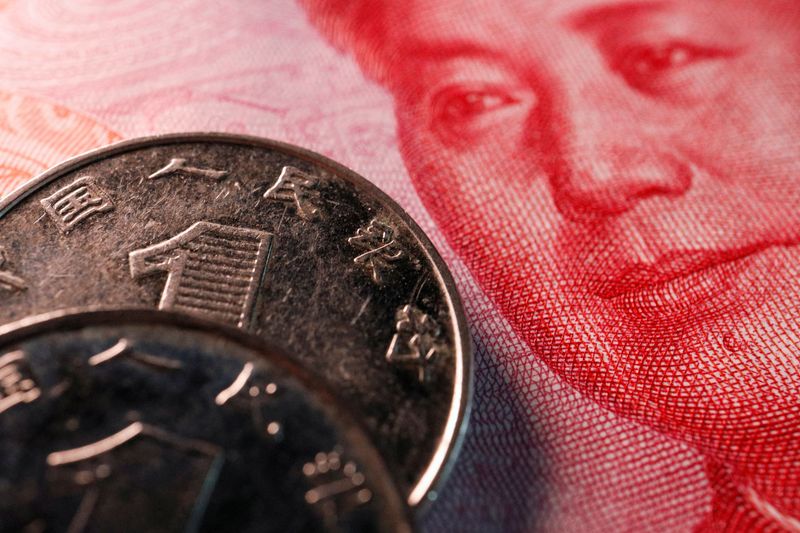
By Jamie McGeever
(Reuters) – A look at the day ahead in Asian markets.
China’s latest inflation figures are out on Thursday, and they could not be coming at a more fascinating – some might say alarming – time for global bond markets.
Long-term yields around the world are shooting higher as investors bet that sticky inflation will force the U.S. Federal Reserve and other central banks to dial down or even halt their rate-cutting cycles.
The 30-year UK gilt yield is the highest since 1998, the 30-year U.S. Treasury yield is a whisker from 5%, and the U.S. ‘term premium’ – the risk premium investors demand for lending long to Uncle Sam rather than rolling over shorter-term debt – is the highest in a decade.
If this is a reflection of investors’ fears that the inflation genie has not been put back in the bottle and central banks are losing control over the long end of the bond curve, policymakers should be worried.
Fed Governor Christopher Waller seems relatively relaxed though, saying on Wednesday he still thinks inflation will fall toward the Fed’s 2% target, allowing for further rate cuts. But minutes of the Fed’s policy meeting last month showed policymakers are wary, particularly around the impact of policies expected from the incoming Trump administration.
Money markets are pricing in only 40 basis points of Fed easing this year, and year-on-year oil price rise is the highest in six months. Investors’ inflation fears are bubbling up.
The global outlier is China, where policymakers are fighting deflation. As Jim Bianco at Bianco Research points out, it is the only major bond market in the world where yields are falling.
Annual producer inflation has been negative every month since October 2022, indicating that price pressures across the economy remain deflationary. Annual consumer inflation is close to zero, and hasn’t been above 1% for nearly two years.
China’s producer and consumer price inflation figures for December will be released on Thursday. According to the consensus forecasts in Reuters polls, economists expect annual PPI inflation shifted slightly to -2.4% from -2.5% in November, while annual CPI inflation cooled to just 0.1% from 0.2%.
This is the context in which Chinese bond yields are tumbling to their lowest-ever levels. The 30-year yield is already below the 30-year Japanese Government Bond yield, and the 10-year yield is now less than 50 basis points away from going below its 10-year JGB equivalent.
HSBC analysts on Wednesday slashed their year-end 10-year Chinese yield forecast to 1.2% from 1.8%.
The yuan remains under heavy selling pressure and on Wednesday slipped to a fresh 16-month low. It is now poised to break the September 2023 low of 7.35 per dollar, a move that will take it to levels last seen in 2007.
Here are key developments that could provide more direction to markets on Thursday:
– China PPI, CPI inflation (December)
– Australia retail sales (November)
– Taiwan, Australia, Philippines trade (December)
(Reporting by Jamie McGeever; Editing by Bill Berkrot)
EMEA Tribune is not involved in this news article, it is taken from our partners and or from the News Agencies. Copyright and Credit go to the News Agencies, email news@emeatribune.com Follow our WhatsApp verified Channel



